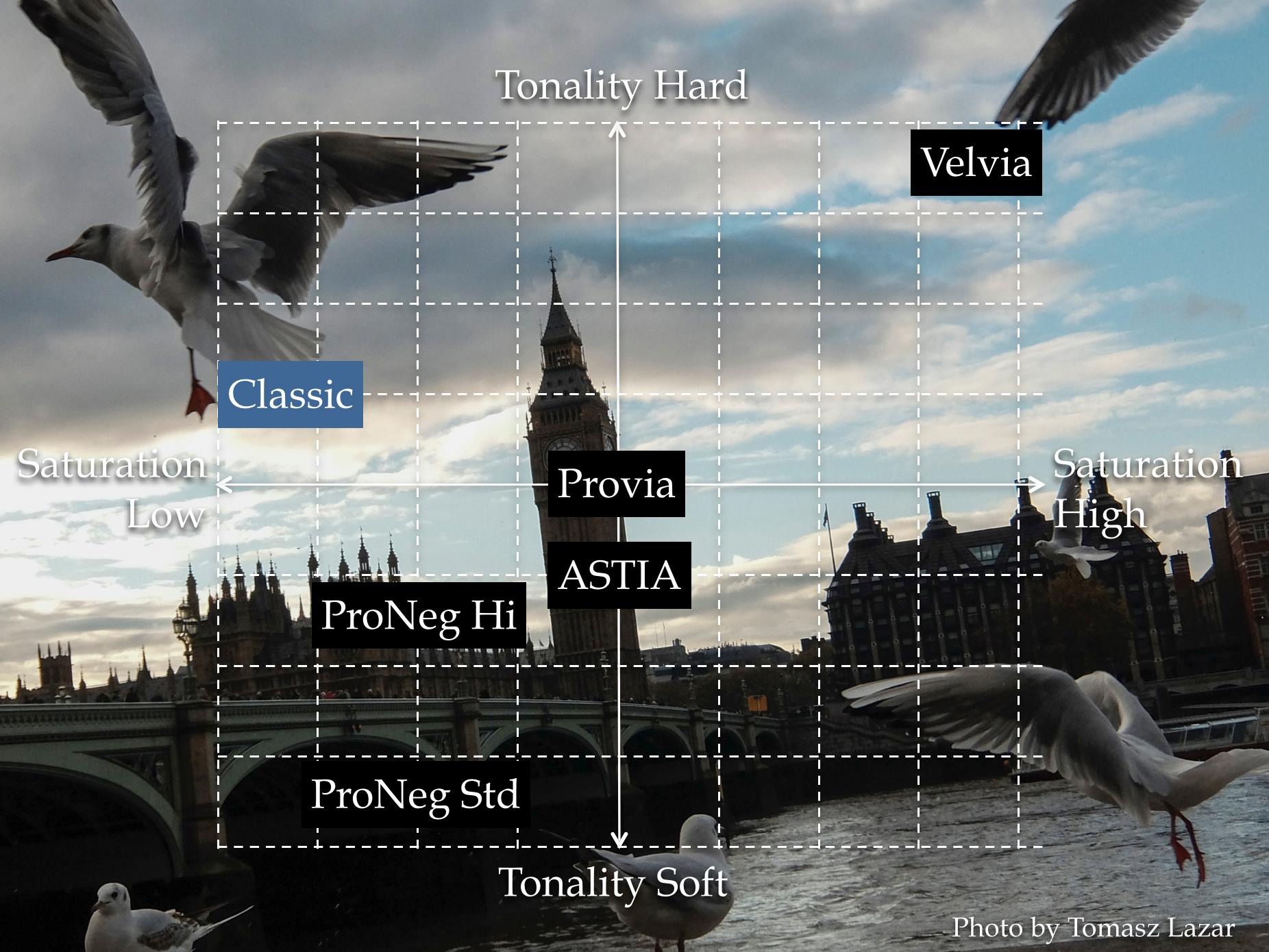
The World of Film Simulation episode 2
CLASSIC CHROME
This episode is about “CLASSIC CHROME”.
Since its release in September, 2014, the film simulation has gained popularity, especially among street and documentary photographers. They often shoot in monochrome and find the film simulation to be fit with their style.
We are glad to hear such voice from the street. The basic idea upon designing “CLASSIC CHROME” is to create a color film simulation version of monochrome, meaning the simulation would be used just as how monochrome would be used. For CLASSIC CHROME, the tonality is the key to tell the story of a photo.
Take a look at the chart. The saturation is the lowest among all film simulations. The saturation has been minimized to the limit.
Photography is often called “Art of omission”.
CLASSIC CHROME omits the element of color in order to make the story you want to tell stand out.
Velvia uses color as the main element, and CLASSIC CHROME is on the opposite end. The use of color is minimized and the tonality becomes the main element.
Take a look at the chart again. You can see that the tonality is a little above the center line and is the second hardest after Velvia.
CLASSIC CHROME’s tonality is hard, but it is not equally hard in all range from shadow to highlight. The shadow end is hard, but the tonality is soft on the highlight end.
To express the tight atmosphere in a picture, one may set the exposure under, but that would equally affect all range from highlight to shadow. The final image would be better if only shadow part is under exposed and the highlight part is kept as is. The subject would become more live and the texture remains present by doing so.
Monochrome is not present on the chart, but the tonality of Monochrome is designed exactly the same as PROVIA for FUJIFILM cameras. It means that the CLASSIC CHROME’s tonality is harder than Monochrome.
CLASSIC CHROME minimizes saturation as much as possible, but the element of color remains and therefore the subject of the picture still remains in color. So the feel of “Monochrome” would be more apparent if the tonality is a little bit on the harder end.
Minimized saturation and one of a kind tonality that make the subject stand out, this is all to tell the story as clear as possible. We would like the photographers that advocate for contents, to also use this film simulation.
In cooperation with : R&D Div. Optical, Electronic Imaging Products Div. FUJIFILM
Continue to read episode 3:
Episode 3 Velvia














































